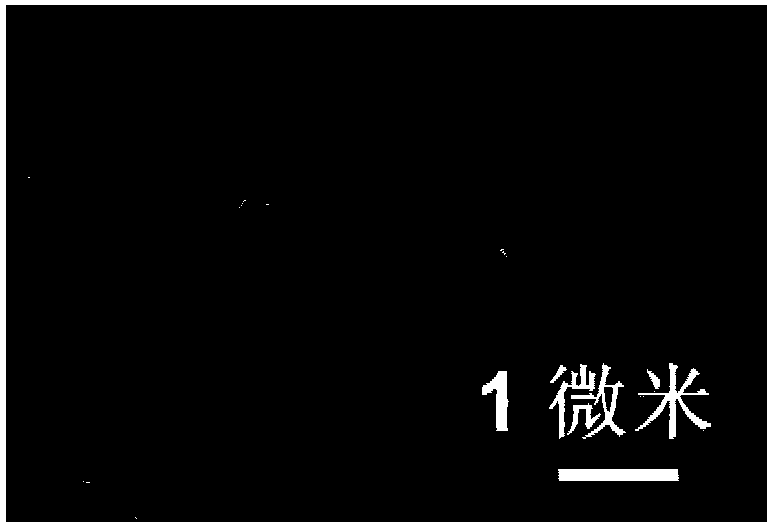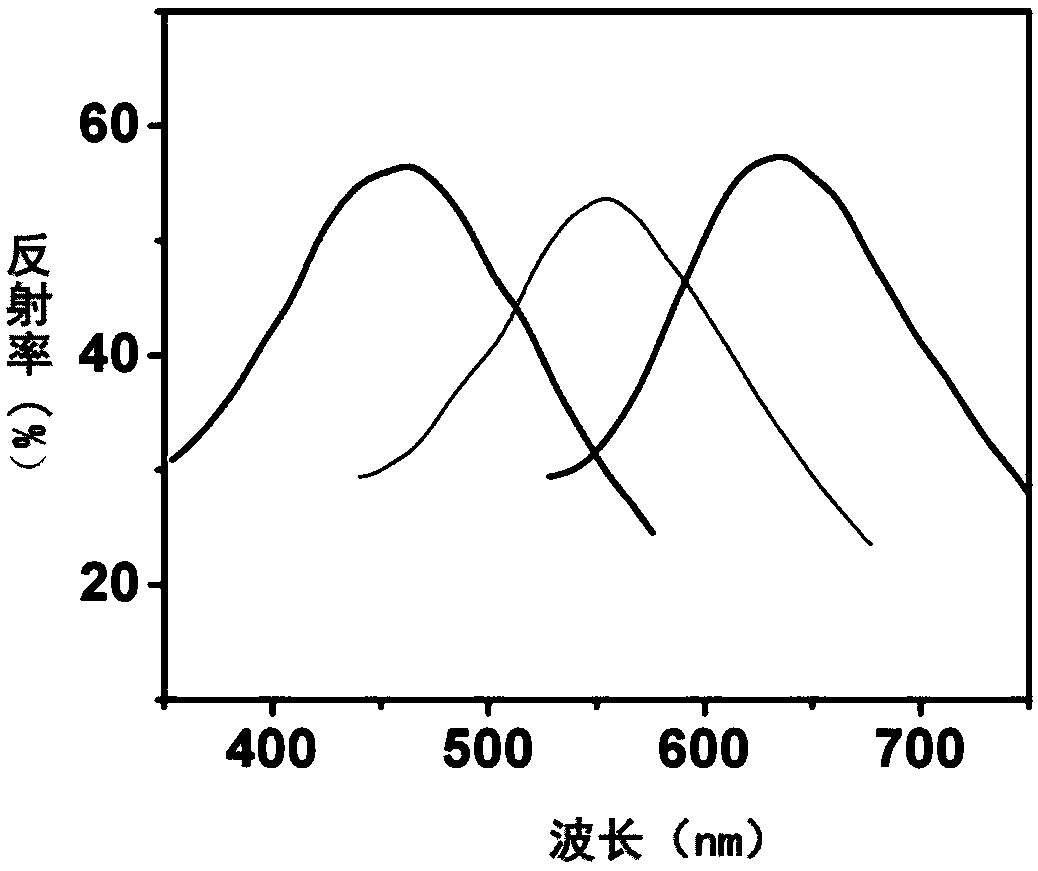Method for improving color brightness of non-rainbow structural color
A technology of color brightness and structural color, applied in optical components, optics, instruments, etc., can solve problems such as brightness reduction, and achieve the effect of improving color brightness
- Summary
- Abstract
- Description
- Claims
- Application Information
AI Technical Summary
Problems solved by technology
Method used
Image
Examples
Embodiment 1
[0020] Monodisperse polystyrene-polymethyl methacrylate-polyacrylic acid colloidal microspheres with a particle size of 210 nm at a mass fraction of 10%, polystyrene-polymethyl methacrylate-polyacrylic acid with a particle size of 210 nm Polystyrene-polymethyl methacrylate-polyacrylic acid colloidal microspheres with a particle size of 1 / 20 of the mass of the acrylic colloidal microspheres are 250 nm, and the particle size of 1% of the mass fraction of the above-mentioned colloidal microspheres is 2 µm Graphene and graphene quantum dots (particle size 50nm) with a mass fraction of 10% of graphene are evenly mixed and dispersed in water to form an emulsion, and then the above emulsion is placed in a commercial spray pen and sprayed onto the On the substrate, after drying at room temperature, a high-brightness green non-iridescent structural color film ( figure 1 ). It has a typical disordered optical structure ( figure 2 ), the reflection peak of its reflection spectrum is ...
Embodiment 2
[0022] Monodisperse polystyrene-polymethyl methacrylate-polyacrylic acid colloidal microspheres with a particle size of 250 nm at a mass fraction of 10%, polystyrene-polymethyl methacrylate-polyacrylic acid with a particle size of 250 nm Polystyrene-polymethyl methacrylate-polyacrylic acid colloidal microspheres with a particle size of 1 / 20 of the mass of acrylic colloidal microspheres are 180 nm, and the particle size of 1% of the mass fraction of the above colloidal microspheres is 5 µm Graphene and graphene quantum dots (particle size 50nm) with a mass fraction of 10% of graphene were uniformly mixed and dispersed in water to form an emulsion. Then, the emulsion is placed in a commercial airbrush, sprayed onto the substrate by spraying, and after drying at room temperature, a high-purity red non-iridescent structural color film ( figure 1 ), the reflection peak of its reflection spectrum is located at 633 nm ( image 3 ).
Embodiment 3
[0024]Monodisperse polystyrene-polymethyl methacrylate-polyacrylic acid colloidal microspheres with a particle size of 180 nm at a mass fraction of 10%, polystyrene-polymethyl methacrylate-polyacrylic acid with a particle size of 180 nm Polystyrene-polymethyl methacrylate-polyacrylic acid colloidal microspheres with a particle size of 1 / 20 of the mass of the acrylic colloidal microspheres are 250 nm, and the particle size of 1% of the mass fraction of the above-mentioned colloidal microspheres is 5 µm Graphene and graphene quantum dots (particle size 50nm) with a mass fraction of 10% of graphene were uniformly mixed and dispersed in water to form an emulsion. Then, the emulsion is placed in a commercial airbrush, sprayed onto the substrate by spraying, and after drying at room temperature, a high-brightness blue non-iridescent structural color film ( figure 1 ), the reflection peak of its reflection spectrum is located at 452 nm ( image 3 ).
PUM
| Property | Measurement | Unit |
|---|---|---|
| particle diameter | aaaaa | aaaaa |
| particle diameter | aaaaa | aaaaa |
| particle diameter | aaaaa | aaaaa |
Abstract
Description
Claims
Application Information
 Login to View More
Login to View More - R&D Engineer
- R&D Manager
- IP Professional
- Industry Leading Data Capabilities
- Powerful AI technology
- Patent DNA Extraction
Browse by: Latest US Patents, China's latest patents, Technical Efficacy Thesaurus, Application Domain, Technology Topic, Popular Technical Reports.
© 2024 PatSnap. All rights reserved.Legal|Privacy policy|Modern Slavery Act Transparency Statement|Sitemap|About US| Contact US: help@patsnap.com










